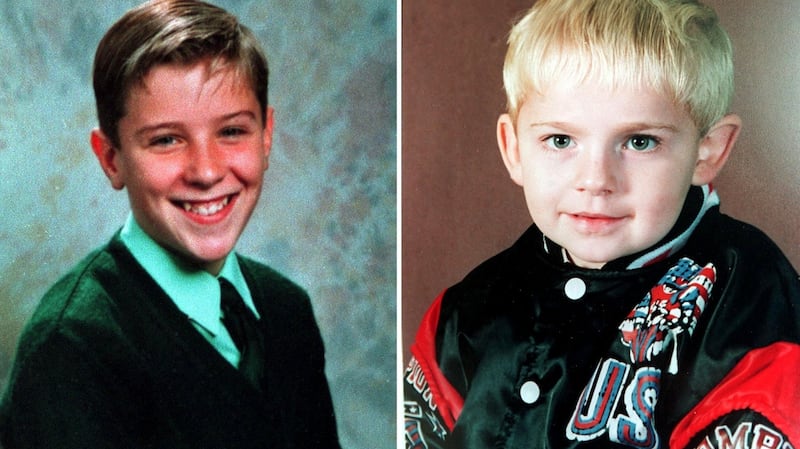The 1993 Warrington bombing that killed two young children touched a “sensitive nerve” among British people and resulted in “damaging” criticism, particularly over the State’s constitutional claim to Northern Ireland, the Irish ambassador to the United Kingdom observed at the time.
Monitoring reaction in Britain to the atrocity, ambassador Joseph Small also referred to misleading media coverage which suggested the Irish government was ambivalent about the IRA. However, he also noted that the backlash against the Irish community in Britain had been mild compared to that which occurred after bombings in the 1970s and 1980s.
The bombs were detonated in rubbish bins in the northern city of Warrington on March 20th, killing Jonathan Ball (3) and Tim Parry (12).
In a separate assessment several months later, another official made the point that despite the worldwide condemnation of the IRA for killing two young children, it had been “if anything, emboldened” in its strategy of causing greatest economic damage possible in Britain.

The Warrington bombing was part of an intense IRA bombing campaign in the UK during 1992 and 1993, including extensive damage to buildings in the City of London.
The Baltic Exchange bomb in April 1992 and the Bishopsgate bomb, both in London, caused £750 million worth of damage. “The IRA has made much propaganda out of these costs,” said the note.
‘Intense public reaction’
Eleven days after the Warrington bomb, Small sent a confidential memo to Seán Ó hUiginn, head of the Anglo-Irish Division at the Department of Foreign Affairs.
“In terms of fatalities and numbers injured, Warrington does not figure highly on the IRA’s list of atrocities in Britain. Inevitably, however, the killing of the two children touched a sensitive nerve and sparked off an intense public reaction.”
He said there was an additional factor that contributed to this sense of outrage. This was the the abduction and murder in nearby Liverpool of Jamie Bulger (3) by two young boys aged 10 and 11 years.
“Reaction to the Warrington bombing was coloured by the Bulger murder and both events became inextricably linked in the public mind, adding to the sense of insecurity and concern here about the apparent collapse of public order and morality.”
Of the public reaction to the bombing, he said: “The embassy and other Irish agencies received several abusive phone calls and hate letters. There were minor incidents in Warrington itself including the breaking of windows in the Irish club there.
“The overall reaction to the Irish community was very mild, however, and a measure of how far things have improved compared to the 1970s when the anti-Irish backlash was very severe.”
‘Damaging article’
That did not extend to the British media which contained negative coverage and pointed the finger at Dublin. “Unfortunately, those attitudes were not helped by this weekend’s damaging article in the Sunday Times suggesting that the IRA’s campaign in Britain is masterminded from Dublin.
“This has since been picked up by other papers as evidence of the ambivalent nature of the Irish Government’s attitude to the IRA,” said Small.
The Irish Embassy noticed that compared to tabloid media outrage over Warrington, little attention was paid to murders in Northern Ireland – that week, four Catholics were killed by the UDA in Castlerock.
Its assessment was that the bomb had strengthened the hand of the “right-wing law and order lobby”, albeit temporarily.











